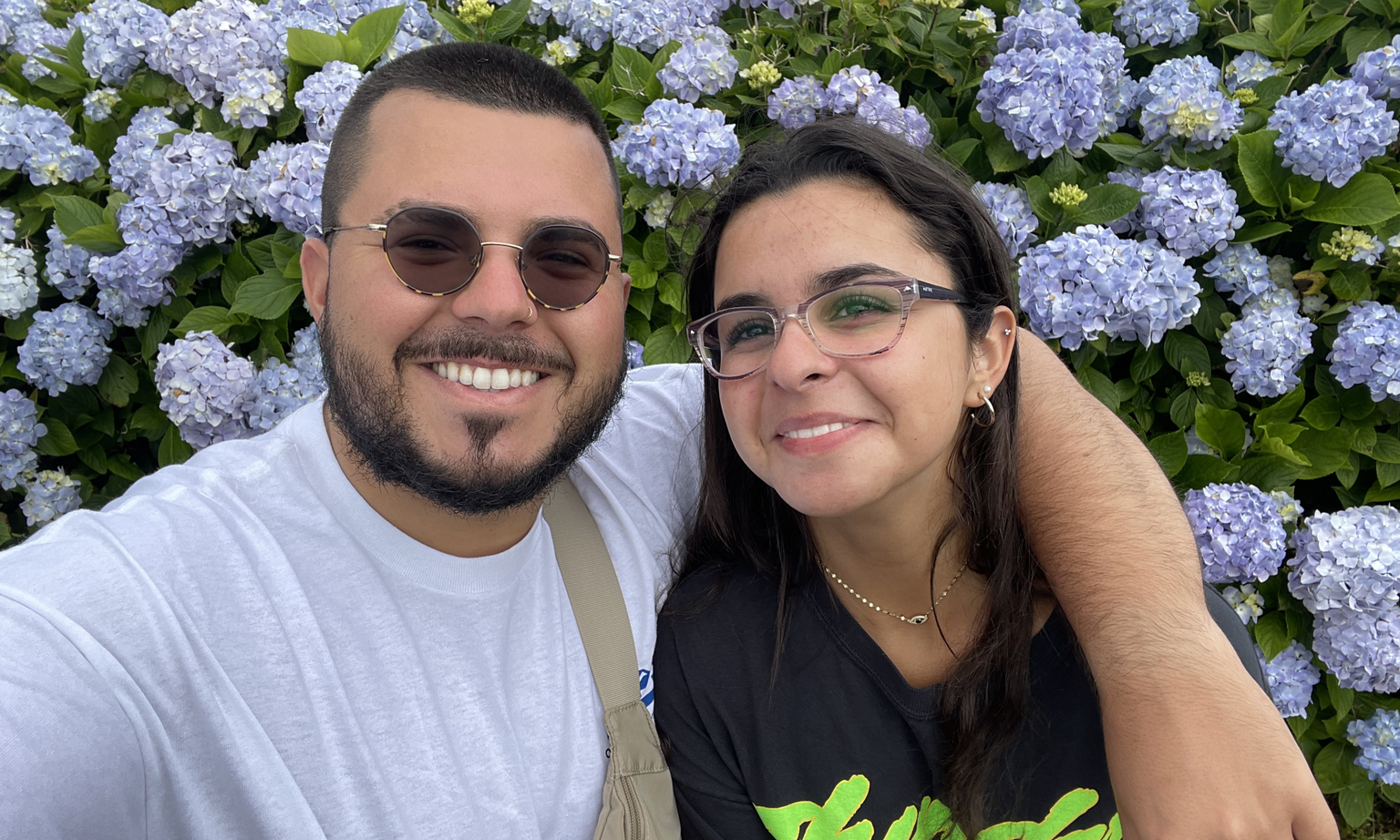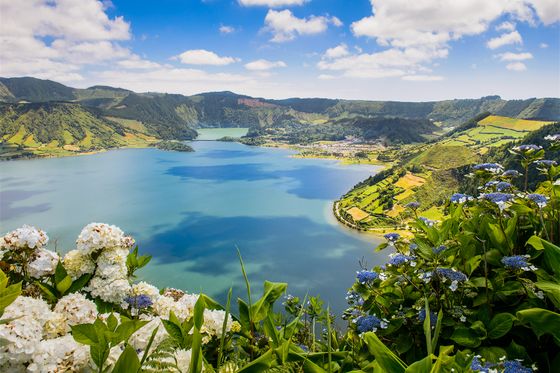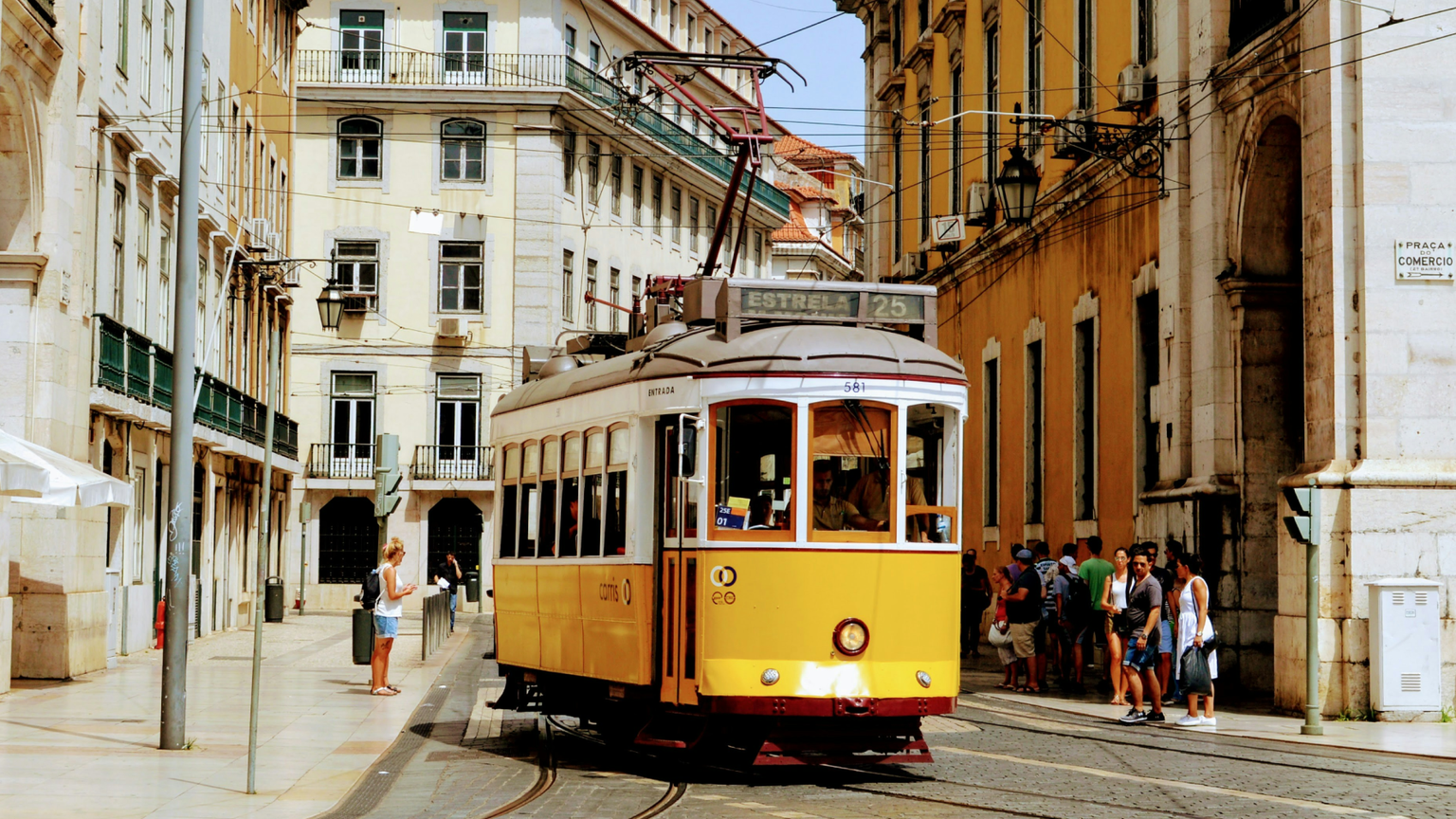)
Growing Up Azorean: An Insider’s Guide to Europe’s Best Kept Secret
Meet someone who knows the Azores not just as a destination, but as a home away from home.
Spending long summer days cliff-jumping and eating meals cooked by volcanic heat, Dylan grew up between Boston and the islands—living out the kind of childhood most travelers dream about. We asked him to share what makes the Azores so special, what first-timers shouldn’t miss, and why exploring it with a group might just be the best way to experience its magic.

How it all started
I was born in Boston to parents who are both from the Island of Pico in the Azores. Azorean immigration to Massachusetts actually dates back to the 1800’s, and there are still huge Azorean communities in Cambridge, Gloucester, New Bedford, and Fall River.
Since both of my parents were born in the Azores, I still have a ton of family back on the islands and learned Portuguese before I learned English. I’d go back to the Azores every summer as a kid, spending at least a month living with my grandma before heading back to Boston for school. I’ve been to all nine islands and even ended up living there for four months in 2020.

Summers in the Azores are magical. The grass is greener, the food is fresher, the ocean is cleaner, and the views are breathtaking, no matter which island you visit. I’d go to the shore every single day to go swimming with my siblings and cousins, jumping off of cliffs into the ocean and catching lapas (limpets) off the rocks that my family would take home and grill with lots of butter and garlic.
In the summer, there’s a Holy Feast in a different village on the island every weekend. During the day, everyone goes to church and, at night, there’s always live music, “tascas” selling fresh food, and bars selling drinks cheaper than anything you’ll find in America. The party goes on until 4–5 am every weekend. The day after, we’d always head back to the coast to relax and swim to help cure the hangover we have from the night before.
If we weren’t on the coast, we were up in the mountains tending to my grandma’s cows, going on hikes, and enjoying fresh air with views of the island’s villages.

What makes Azorean culture its own thing?
If you ask anyone from the Azores about their heritage, they’re going to answer Azorean before they answer Portuguese. Azoreans are PROUD of their heritage, and everything from the food to the culture to the accent is different from mainland Portugal—so much so that a lot of mainlanders can’t understand us when we talk. We’re an autonomous region of Portugal, and even have our own president!
Where mainlanders use olive oil, we use butter thanks to all the dairy production we have across the islands. Mainlanders are big on seafood, and so are Azoreans, but we also love pork and beef dishes. One of my favorite meals in the Azores is a tradition cozido (boiled dinner), and the best one on all the islands is from São Miguel, where they actually cook the meal underground using the heat of the island’s active volcano. Growing up, we would make a day trip out of it—leaving our food slow-cooking for hours while we hit up local beaches and hot springs before sitting down to eat our meal that was just cooked by a literal volcano.

Three hidden gems you won’t find in any guidebook
Caloura, Agua de Pau: A quiet little village with one of my favorite swimming spots and an oceanside bar with great food. It’s very local—you’ll see towels on the dock, sunbathers, and kids jumping straight into the ocean.
Miradouro da Ponta do Sossego: A viewpoint on the far east side of São Miguel with dramatic coastline views that make it obvious why the Azores are called the “Hawaii of Europe.” There are tons of hiking trails in the area, too.
Cascata da Ribeira dos Caldeiroes: My favorite waterfall on the island. Easy to get to, surrounded by picnic spots and hiking trails. You’ll often see groups canyoning up the falls.
Why visit the Azores with a group?
The Azores are unlike anywhere else—remote, stunning, culturally rich, and full of places only locals know about. The best way to experience it is through an Azorean perspective: a local guide who loves their home, knows the history, speaks the language, and can show you the real hidden gems. Plus, exploring somewhere this special is even better when you’re sharing it with new friends.















)


















)





